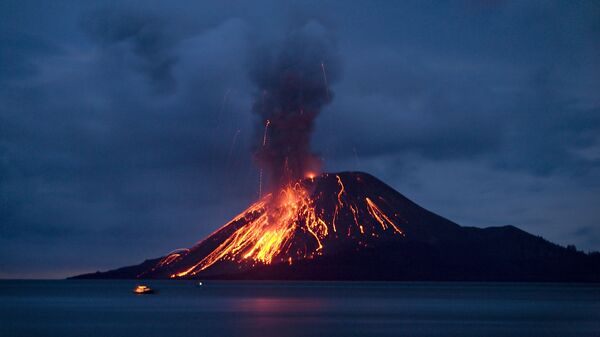The remnants of lava, the rock that forms and then solidifies on the earth's surface, contain information that can not only reveal the causes of eruptions but also unravel the mysteries of our planet's past and future.
The study of Italian volcanoes has advanced thanks to the new physical methods of Professor Sultan Dabagov's laboratory at NRNU MEPhI and INFN (National Institute of Nuclear Physics in Italy). The latest advances in physics were used in the research, which has allowed scientists to obtain the information "recorded" in the remains of an eruption.
"Our work is a detailed study of the active phase in the planet's life, which manifests itself in the form of volcanic eruptions. Eruptions are complex phenomena and trying to notice the correlations between their many variables is a step towards their understanding and prediction. We used powerful sources of x-ray radiation, capable of penetrating deep into the studied samples without destroying them," Sultan Dabagov, the research director, professor at the Institute of Nanotechnology in Electronics, Spintronics and Photonics at NRNU MEPhI, told Sputnik.
According to the scientist, in the first stage, volcanic samples were studied using multi-capillary optics based on x-rays. Then, to confirm the results, the samples were examined using more powerful synchrotron radiation. This made it possible to obtain x-rays and tomograms of the samples, recreate the internal features of various rocks and obtain high-resolution three-dimensional models.
Researchers believe that analyzing these models in comparison to samples of other eruptions will help draw conclusions about both historically known eruptions and the eruptions of active and passive volcanoes.
"The data obtained using computed tomography and synchrotron radiation can be integrated into the general environment of feature finding methods used in geology. We can better understand the impact of micro- and nanoporosity of the studied rocks on their permeability, in order to answer many important questions on the formation and the future development of our planet," Sultan Dabagov said.
The new tool will allow for the continuous study of volcanic samples since it is smaller and cheaper than synchrotron sources (this will help equip almost any geological research centre). According to experts, the use of multi-capillary optics with small-sized sources and radiation detectors can form the basis for creating compact portable devices for analyzing various rocks on the ground, without moving samples.




